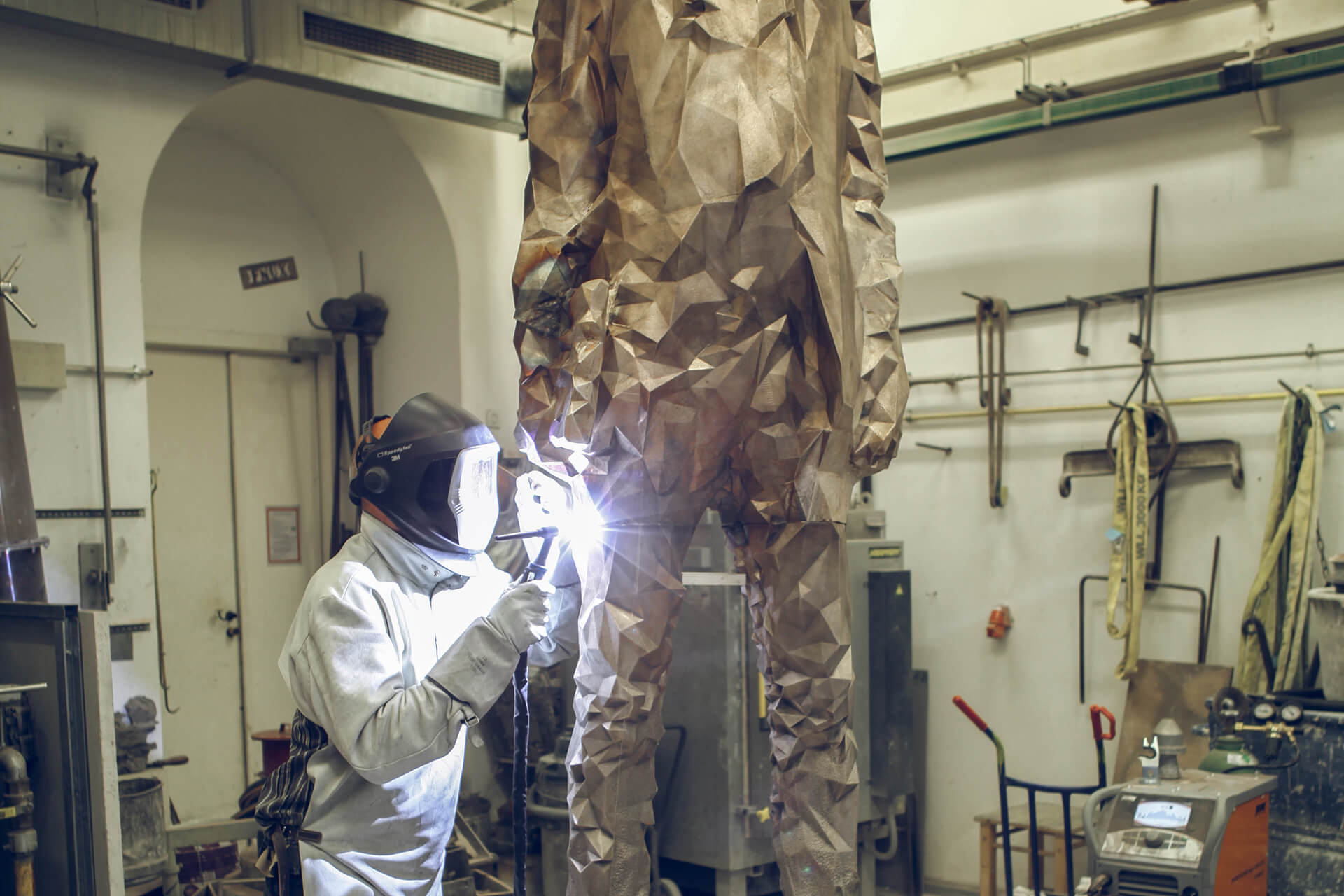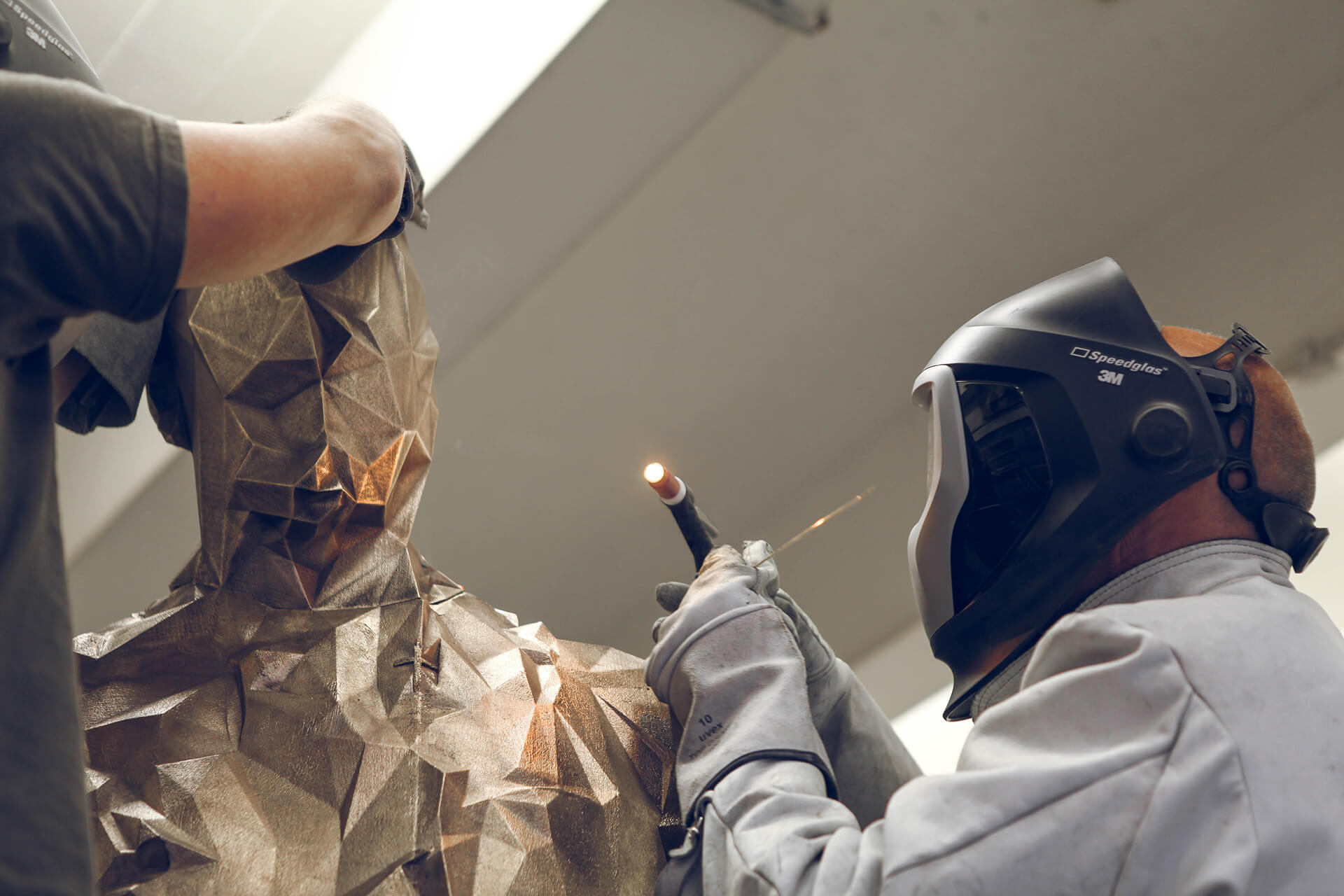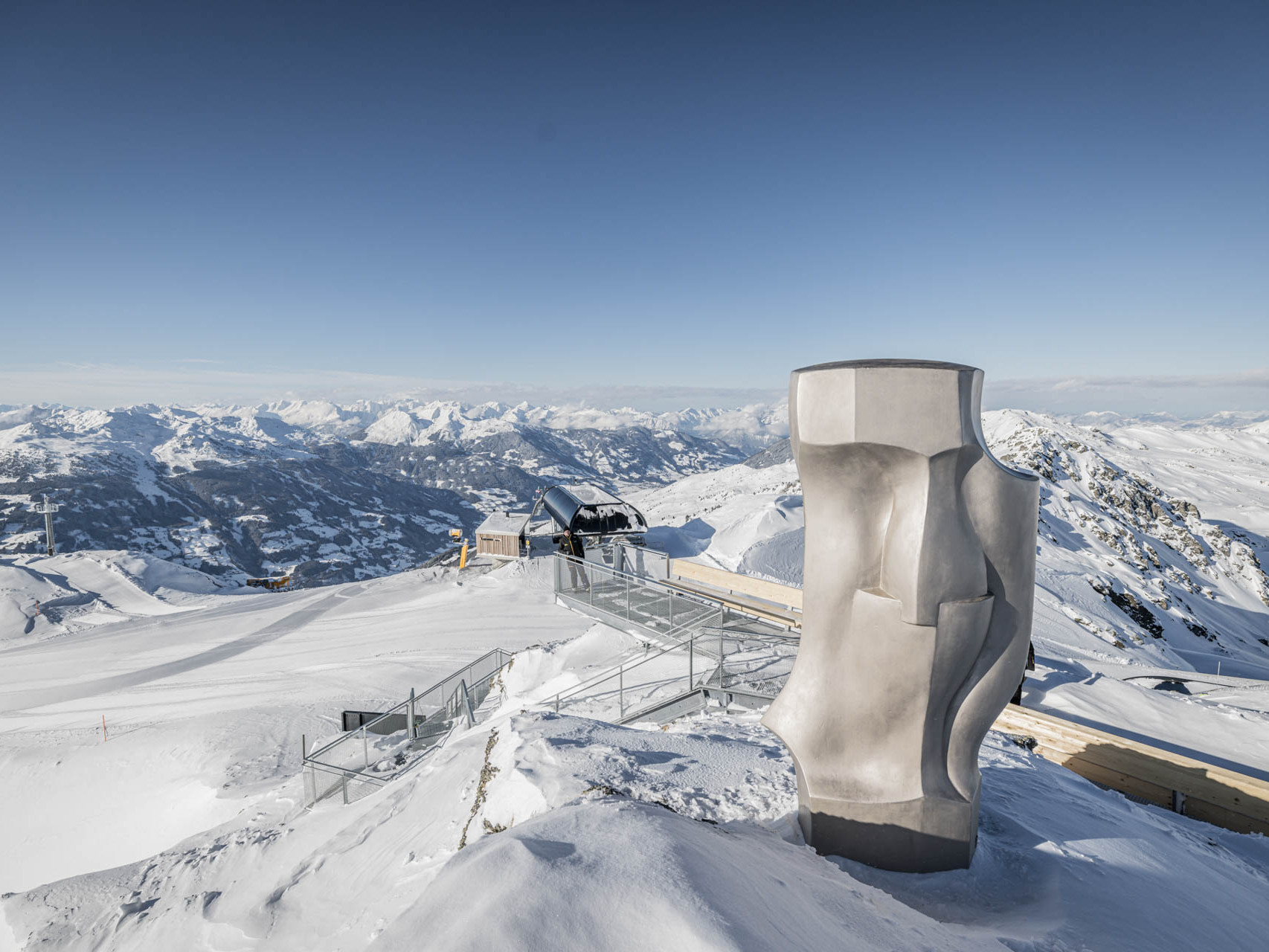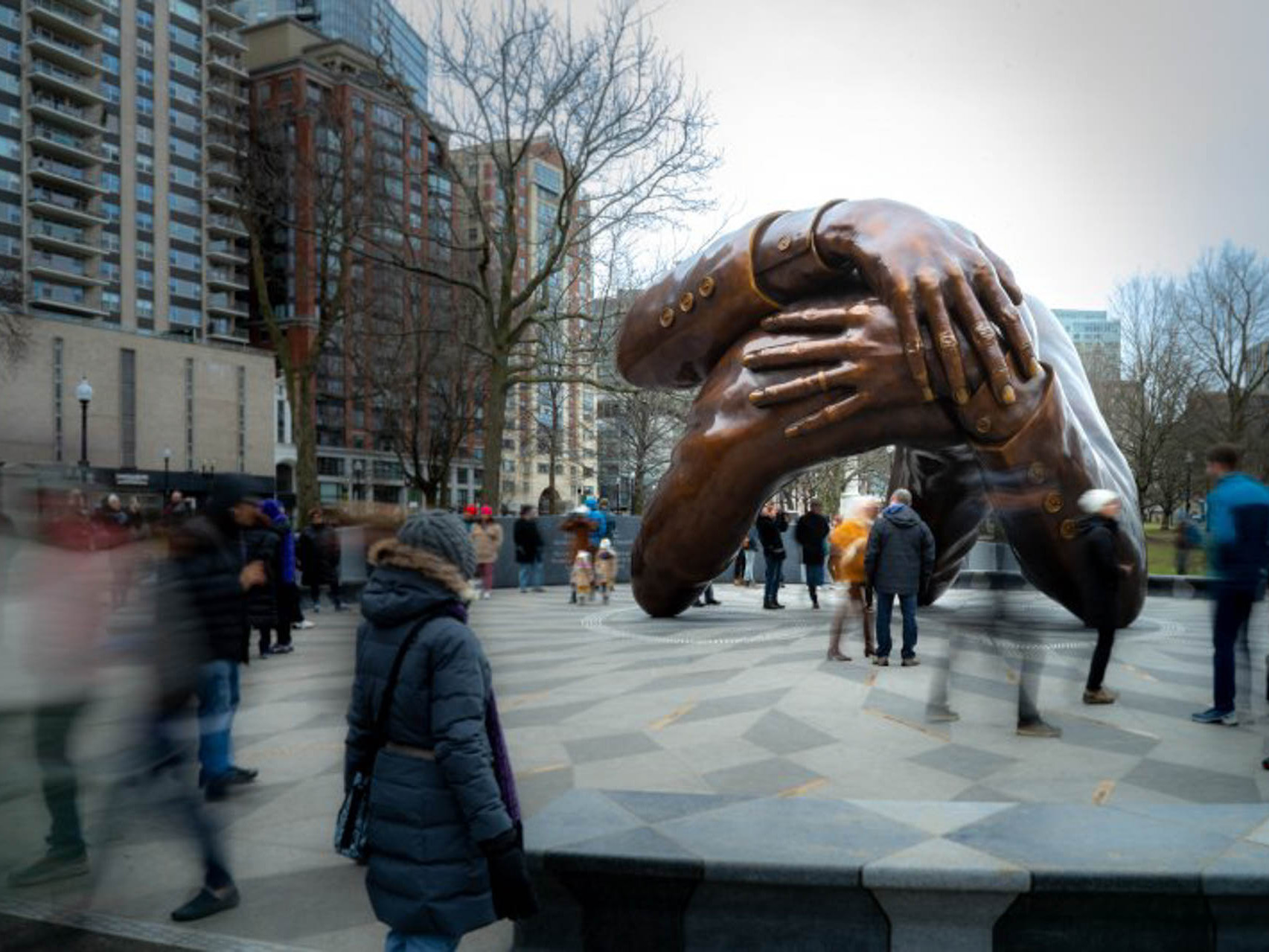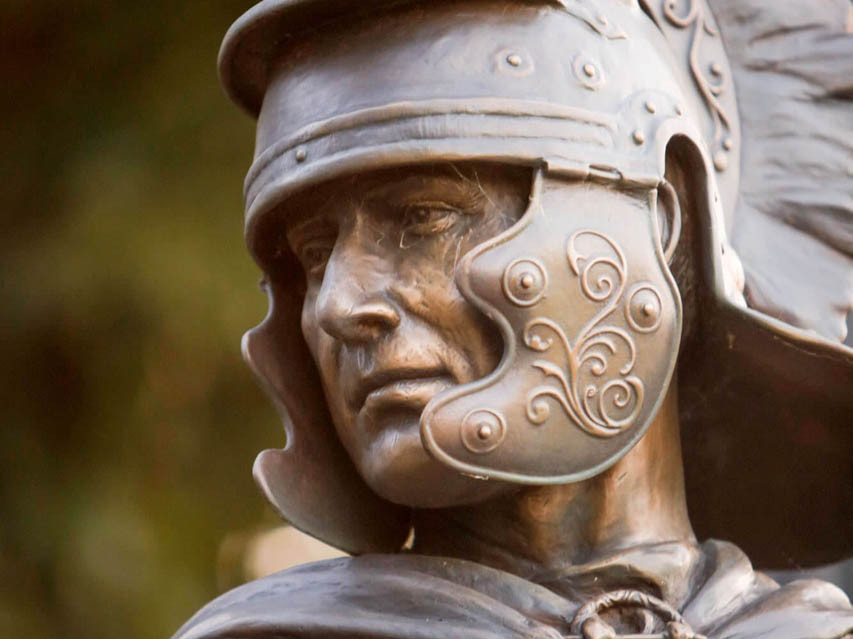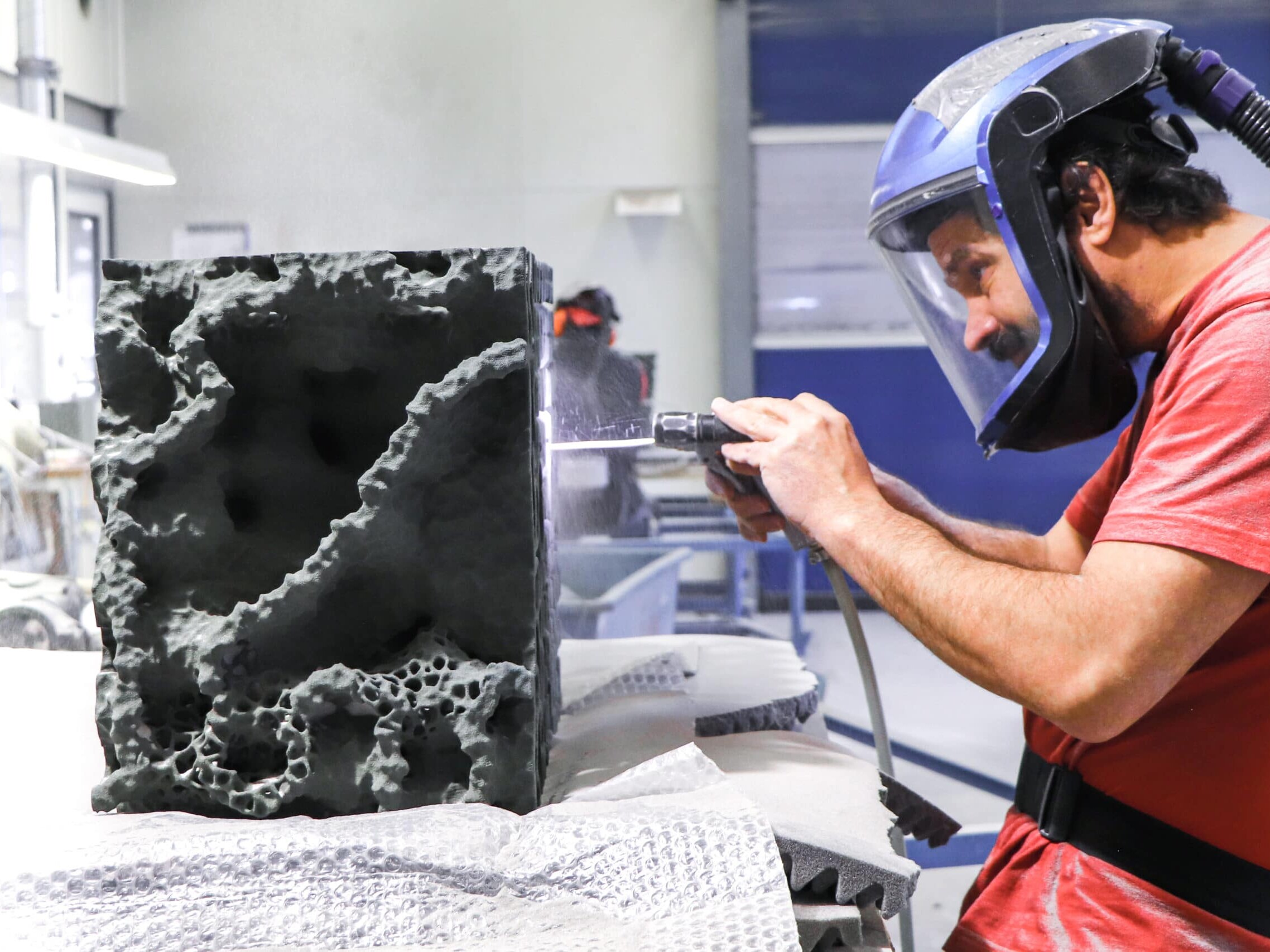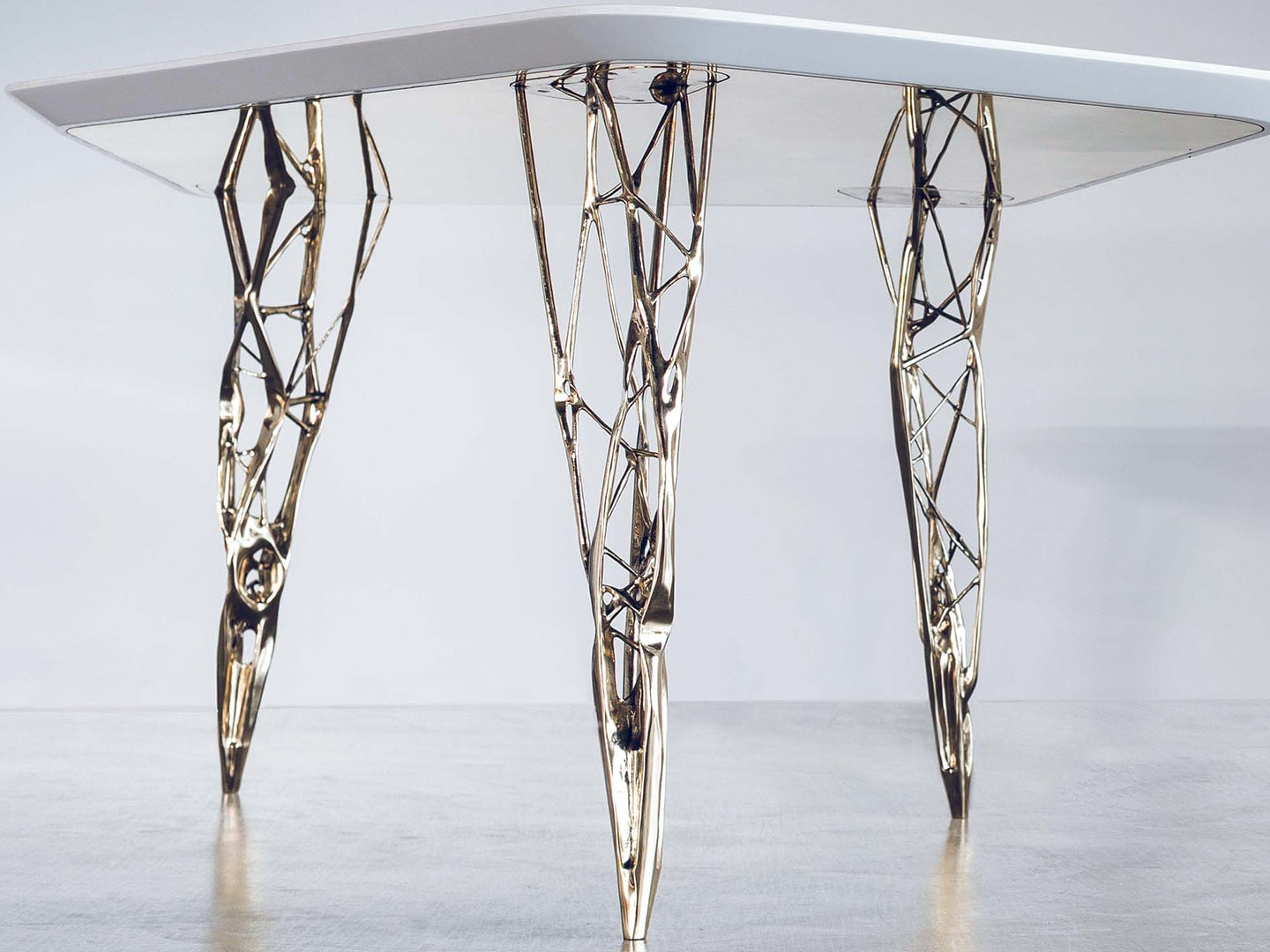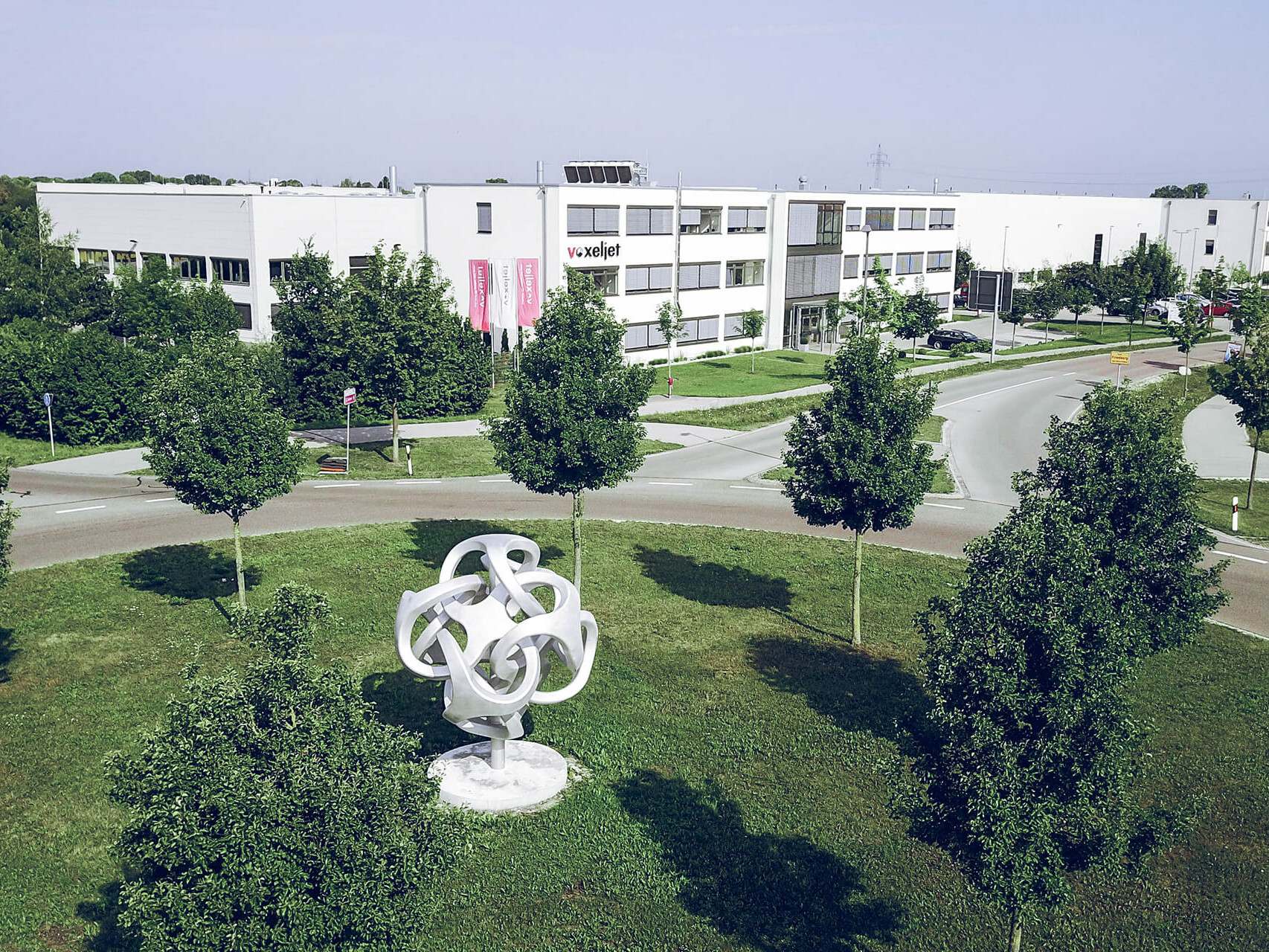- Home
- Case Studies
- Art and Design
- Additive manufacturing as an artistic tool
The additive manufacturing as an artistic tool
The 3.3 meter tall statue is created using innovative 3D printing technology from voxeljet. His work defined Rome as the center of ecclesial structures in Europe and laid the foundations of the Christian West.
His name was Wynfreth, one of the most prominent Christian missionaries. However, he is better known by the name of Boniface. His activities as a missionary in Germany, also led to him being called the “apostle of the Germans”.
The town of Freising has a deep affiliation with the holy Boniface, because it was him who officially founded the diocese of Freising in 739. The town of Freising therefore decided to dedicate a statue to him and called for an art competition. The task was to design a contemporary and fresh interpretation of the figurine of Holy Boniface. The statue was to be placed on Korbinian’s bridge in Freising. After extensive examination of the received proposals the adjudicators were won over by the German artist and bronze sculptor Bruno Wank. The statue impresses with its spectacular and bold corporeal vividness and convinces with its high level of modernity. However, there was something special hidden behind the statue. It was partly manufactured using one of the most innovative technologies of the modern age: Binder Jetting 3D printing.
The holy missionary
The sculpture, a larger-than-life figure with a total height of 3.3 meters and a weight of 530 kg, was cast exhaustively in bronze. As a reference to the Donar oak felled by Boniface, the saint is standing on an oak trunk. Whilst carrying out his missionary work he felled an oak tree near Fritzlar, which had been dedicated to the heathen god Thor. The lack of any reaction from the Nordic god deeply impressed his supporters. Boniface’s traditional attribute stands between the statue’s legs: an axe. A sign that the missionary work which also required violence is now a thing of the past.
His broad stance gives us the impression that the statue was hewn from a single trunk, and signifies determination and immediacy. He is wearing a small cross on the lapel of his contemporary suit and he holds a work of literature in his right hand.
Bruno Wank, Artist
Innovation vs. tradition
Artist Bruno Wank can draw on a wealth of experience in the field of bronze casting. Moreover, he has been increasingly involving himself in the technology of 3D printing. He chose voxeljet AG from Friedberg as the supplier of the molds he needed for his bronze sculpture. That company is one of the leading producers of industrial 3D printer and specialists for Powder Binder Jetting of sand and plastic powders. Wank made a conscious decision to resort to 3D printing. This technology simplifies and speeds up the work process considerably. Furthermore, new possibilities arise in terms of shaping and precise detailing.
Had he chosen to use traditional model making methods for casting the artwork, he would have had to initially produce a 1:1 scale model of the figurine. This model then would have had to be molded in molding sand. The liquefied bronze could then be poured into the resulting negative mold. “This method is characterized by its lengthy time-frame, because the model has to be made from wood or a similar molding material”, Wank explains.
The basic idea behind the figurine comes from computer games. There, animated figures are constructed from polygons. Thus, it seemed obvious to use this technology, in order to transfer modernity into a contemporary sculpture. The polygons in animated characters are so small, that they seem to melt away. But I wanted to show them, because the result appears to be somewhat “cubistic”. A reference to Cubism, so to speak, which at the same time reflects our contemporary spirit of the age.
Bruno Wank, Artist
Webinar: Art Casting
In this webinar, the renowned German art foundry, Strassacker, will tell all about PMMA 3D printing technology and it’s applications in art casting.
The statue was designed with Computer Aided Design (CAD), and then printed on a VX4000 printing system from voxeljet with a build size of 4,000 x 2,000 x 1,000 mm. To produce the molds, a recoater first applies a 300 µm layer of sand to the building platform. An industrial printhead then selectively applies the binder according to the CAD blueprints and bonds the sand where the component is to be produced. The print head then rises by one layer thickness and a new layer of sand is spread and the print head applies the binder. This process is repeated and thus, layer by layer, the mold takes shape.
The molds for the casting of Bonifatius were printed in a total of 27 individual components. The molds were coated with a layer of foundry coating prior to casting and then assembled. The casting took place in five molds. The resulting castings were finally welded together and chiselled, in order to refine the surfaces.
3D printing as an artistic tool
“The unusual, in the truest sense of the word multi-faceted surface, can be transferred into the casting in a perfect finish, which would be difficult to achieve by hand”, Wank says. This is also shown in the polygon construction of the figurine, with its many edges and corners. Moreover the 3D printing ensures that there is a markedly lower risk of damaging the surface of the casting, and that the material remains in perfect condition, too.
It was envisaged that the project would take a total of seven months to complete. Thanks to the quick and effective use of 3D printing technology by voxeljet, Wank was able to have the statue completed in no more than 9 weeks. The greatest challenge – according to Wank – was to apply and adapt sand casting technology on such a scale. “3D printing offers artistic casting more extensive technical possibilities and therefore additional new opportunities in terms of interpreting and shaping sculptures. The availability and use of sand 3D printing technology opens new doors and opportunities for us as artists. It provides a tool for sizes, which were previously impossible to achieve.” The statue has faced its audience in its modern guise on Korbinian’s bridge in Freising since 2017 and Boniface presents himself as a divine man of our time.
Further Case Studies
3D-printed sculptures at 2500 metres
At 2,500 metres in the Tyrolean Alps, these 3D-printed sculptures enjoy a special view. They are the fulfilment of a long-held dream of Tyrolean artist Magnus Pöhacker.
3D printing patterns for large-scale sculpting
The Embrace is a public artwork in Boston to honor and remember the life of Martin Luther King and his wife Coretta Scott King. The sculpture was created with 3D PMMA printing and investment casting
58 sculptures cast in bronze visualize the Way of the Cross of Jesus in Nebraska, USA. The unique works of art were created by famous artists using a combination of 3D printing, investment casting and bronze casting.
Functional Architecture with 3D Printing
The Mersitem Wall is a best practice example of how functional and sustainable architecture can be created with 3D printing.
3D printing for sustainable architecture
Singapore's AIRLAB uses these table legs to show how architecture can be made more sustainable and functional at the same time.
3D printing the future of prop manufacturing
Using 3D printing to create cost-effective, realistic movie props.
Four meters high artwork from the 3D printer
voxeljet creates the four-meter-high aluminium sculpture "sling ball" using the 3D printing system VX4000
3D Printing Solutions
Would you like to learn more about voxeljet and 3D printing? Click here for the entire voxeljet solution portfolio.



















